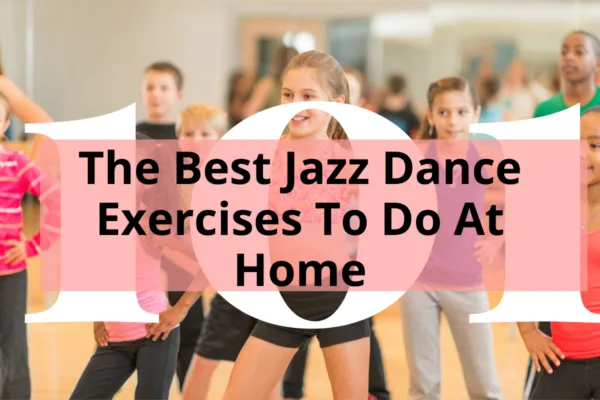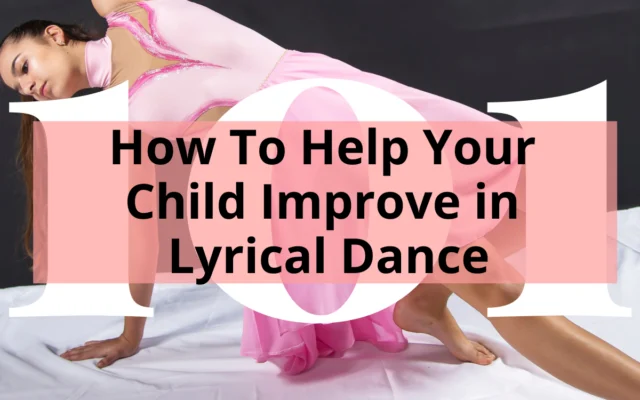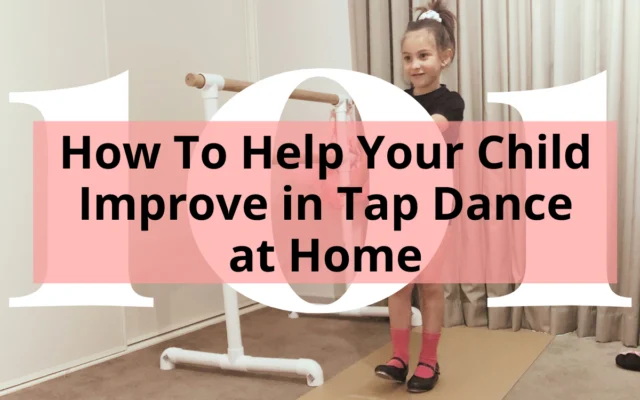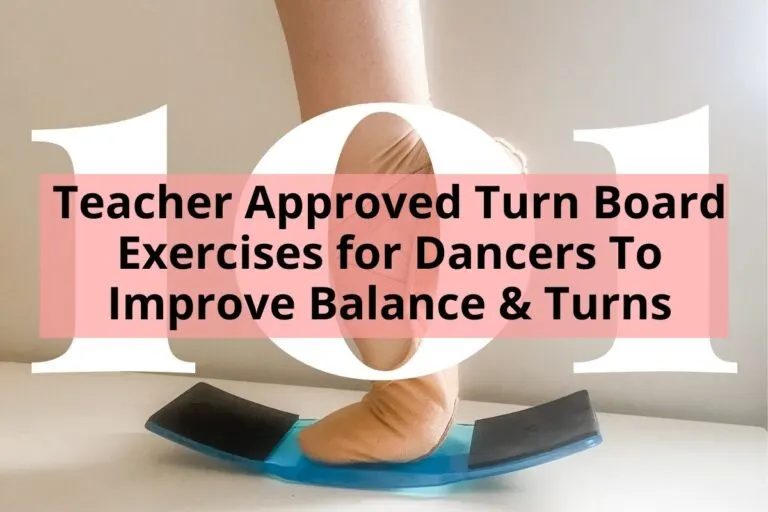By Lesley Mealor / Edited by Samantha Bellerose, B.Ed, Dip.Dance (Performing Arts)
Imagine, if you can, bored, blank faced orphans in “It’s a Hard Knock Life” from “Annie”. Or, Donald O’Connor trying to “Make Em’ Laugh” in “Singin’ in the Rain” without his hilarious and skilled facial expressions throughout the show-stopping routine. It would be a pretty bleak world if musical theatre dancers didn’t use acting skills to tell their story. If your child is studying theatre dance, there are a few things you can do to help them level up their acting abilities from home!
To help your child improve in theatre dance, there are several exercises you can do. The theatre games Mirroring, Simon Says Stage Directions, 5 Senses, and Changing Attitudes all work to improve dancers’ ability to understand how their bodies move in space, and how to convey all types of emotions.

Of course, your dancer can still benefit from practicing dance steps and choreography for theatre dance at home, but because they are likely getting more dance related instruction at the studio, supplementing that training with some easy, fun acting and improv exercises at home will give them a leg up in the classroom and on the stage!
Musical Theatre Games For Body and Spatial Awareness
In many forms of dance for the stage, dancers are simply asked to stay in lines or formations. In theatre dance, more than likely they will be asked to imagine they are on a set, with real or imaginary furniture, props, and set pieces – in other words, they will be navigating more than just other dancers while they perform!
For this reason, body awareness and spatial awareness are imperative to a successful musical theatre dance performance and education. These exercises Mirroring and Simon Says Stage Directions are designed to help dancers understand how their bodies exist in space, as well as navigate in and around other dancers.
Mirroring

Mirroring is a classic theatre and improv exercise that constantly changes leaders, so that when done correctly, an observer won’t be able to tell who is leading!
To begin, find an open space. It doesn’t have to be too big – the center of your living room, or a corner of a bedroom will work just fine.
Start with two people facing each other. Take a moment to make eye contact, and try to maintain eye contact throughout the exercise.
Then, one person should slowly start moving a part of their body. The other person will try to mimic exactly what the first person is doing, acting as their mirror. It helps to take it slow at first, but as you get more comfortable with the game, participants can move faster.
As you play, without speaking, change leaders. Remember to use all body parts, and don’t forget that you can also change levels – move from standing, to kneeling, to sitting. Anything goes!
To further challenge participants, you can begin to incorporate dance steps into this activity. Keep in mind that the goal is not to be perfect, but to try your best to mimic the other person’s movements.
Simon Says Stage Directions

In Simon Says Stage Directions, you will use the normal rules of Simon Says, and incorporate stage directions. In musical theatre dance, knowing stage directions is important and this game is a fun way to work on memorization and execution! In case you are unfamiliar with stage directions, here is a helpful graphic:
First, find a space to play. This game is best played in a larger open space, like a back yard, gym, or outside deck. Designate one direction as the audience, that way you know what your orientation in space is.
For a simple version of this game, start with simply calling out “Simon says stage left!” and have the dancers walk to the position. Feel free to use the regular rules of Simon Says, where if “Simon” doesn’t say “Simon says”, and the students move, they are out.
Once this becomes easier, you can add to the game by including dance skills in the instructions. For example, “Simon says chassé upstage center!”
Musical Theatre Games For Improving Performance Skills
Since musical theatre dance incorporates so much acting, it’s important for dancers to hone in on their performance skills. Both Five Senses and Changing Attitudes are designed to help dancers practice their facial expressions, body language, and interpretation of different emotions in ways that an audience can understand.
Five Senses
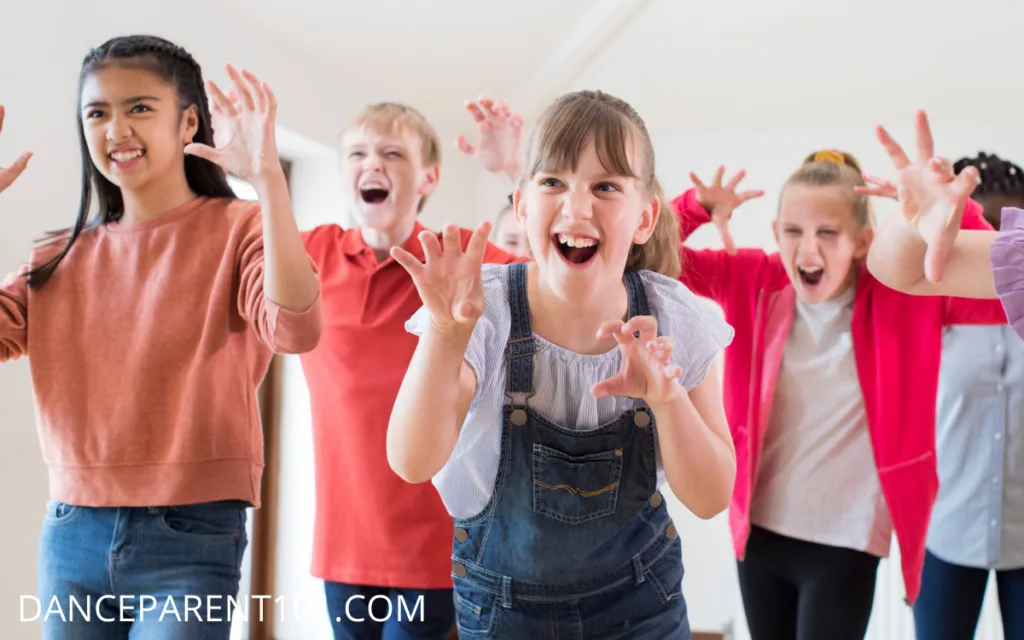
The goal of 5 Senses is to create all sorts of scenarios that evoke different reactions from your senses. Using the 5 senses (sight, sound, taste, touch, smell), dancers will be challenged to come up with unique ways of portraying their reactions.
First, participants will create a few scenarios per sense. Choose amongst yourselves how many each person will create. Write them on pieces of paper and place in a hat or bowl. To help get you started, here are a few ideas!
- Sight
- You see your best friend after a year apart
- You see a beautiful rainbow
- You see the scariest monster you can imagine
- Sound
- You hear rushing water
- You hear your favorite song
- You hear nails on a chalkboard
- Taste
- You taste ocean water
- You taste sticky honey
- You taste a sour candy
- Touch
- You feel a fuzzy blanket
- You feel hot asphalt
- You feel freezing snow
- Smell
- You smell a rotten egg
- You smell grandma’s fresh apple pie
- You smell stinky feet
Then, one dancer will choose a scenario at random, and react to that scenario in front of the group. The other dancers will try and guess the scenario based on their reactions. Take turns choosing the scenarios and performing for the group.
To make this game more dance-specific, take a phrase of choreography and apply a scenario to that movement. It’s amazing what different intentions can do to the quality of movement in a phrase!
Changing Attitudes

This game is a solo-player game, so if you are playing with friends, take turns being the one doing the activity. In Changing Attitudes, the goal is to explore the many ways a different attitude can influence how we take part in an activity.
First, choose an activity to act out. Making a sandwich, folding laundry, putting on makeup – anything goes! Then, perform the activity with no set intention besides simply doing the activity.
Next, another player will suggest an attitude – scared, elated, surprised, annoyed; and the player takes on that attitude while performing the activity. Notice how the change in attitude changes the way the activity is performed. Feel free to exaggerate the actions so it’s clear what your attitude is!
To dance-ify this game, take a phrase of choreography and apply an attitude to the phrase. This will feel similar to the 5 Senses game, but gets more specific to simply portray an attitude as opposed to a scenario.
Developing acting and performance skills can take time, but with extra work at home, these skills will become easier to master. Don’t forget to also encourage your child to apply these skills during choreography, since that’s the whole point of learning them! In time, you might have the next Donald O’Connor “making em’ laugh” in your family!

